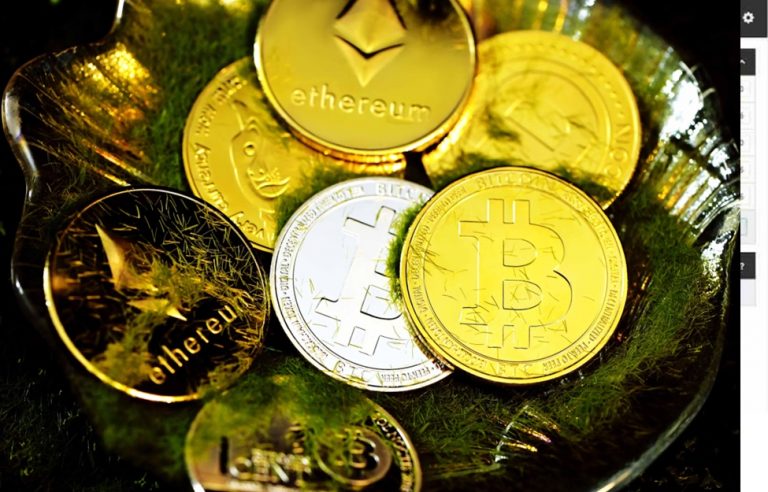
Michael Saylor, a prominent Bitcoin advocate and Strategy chairman, has predicted Bitcoin could reach a $500 trillion market cap, implying a per-coin price of roughly $23.8 million to $25.2 million, given its 21 million total supply or 19.84 million circulating supply. His reasoning hinges on Bitcoin absorbing value from traditional assets like gold, real estate, and other stores of value, which he argues will be demonetized as capital shifts to digital assets. He sees Bitcoin as the next evolution of money, driven by its fixed supply and growing institutional adoption, potentially causing a supply shock.
U.S. Securities and Exchange Commission (SEC) announced that certain stablecoins, specifically those referred to as “covered stablecoins” like USD Coin (USDC) and Tether (USDT), are not classified as securities under federal securities laws. This clarification came from the SEC’s Division of Corporation Finance, stating that these stablecoins—designed to maintain a 1:1 peg with the U.S. dollar, fully backed by low-risk, liquid reserves, and redeemable on demand—do not meet the definition of a security. As a result, transactions involving the minting or redeeming of these stablecoins do not require registration with the SEC.
However, the announcement has nuances. The SEC’s guidance applies strictly to stablecoins meeting specific criteria, such as being backed solely by USD or high-quality liquid assets, with no interest or profit promised to holders. Some sources suggest Tether’s USDT may not fully align with these standards due to its reserve composition, which includes assets like commercial paper, bitcoin, and gold, potentially complicating its status under the SEC’s framework. Commissioner Caroline Crenshaw dissented, arguing the guidance oversimplifies risks, particularly for retail investors relying on intermediaries, and may misrepresent the market’s stability.
Register for Tekedia Mini-MBA edition 19 (Feb 9 – May 2, 2026): big discounts for early bird.
Tekedia AI in Business Masterclass opens registrations.
Join Tekedia Capital Syndicate and co-invest in great global startups.
Register for Tekedia AI Lab: From Technical Design to Deployment (next edition begins Jan 24 2026).
World Liberty Financial (WLFI) proposed a test airdrop of its USD1 stablecoin to all WLFI token holders to validate its on-chain airdrop system, reward early supporters, and boost USD1 visibility before a broader launch. The airdrop, planned for Ethereum Mainnet, will distribute a fixed amount of USD1 per eligible wallet, with the exact amount and timing still under review based on the number of wallets and budget. The proposal requires community feedback and a governance vote to proceed, but WLFI reserves the right to modify or cancel it even if approved. The USD1 stablecoin, launched in March 2025, is pegged to the US dollar, backed by US Treasuries, dollar deposits, and cash equivalents, and managed by custodian BitGo.
Gold reaching $3,220 per ounce reflects strong safe-haven demand amid economic and geopolitical uncertainty. Factors like tariff tensions, inflation fears, central bank buying, and stock market volatility are likely driving the surge. While some sources suggest prices could climb further—potentially to $3,300 by year-end—others warn of profit-taking or resistance at these levels. Always consider market dynamics and risks before acting on such trends.
U.S. Department of Justice (DOJ) disbanded its National Cryptocurrency Enforcement Team (NCET) on April 7, 2025, as confirmed by multiple sources. Deputy Attorney General Todd Blanche issued a memo stating the DOJ will no longer pursue cases against crypto exchanges, mixers, or offline wallets for their users’ actions or unintentional regulatory violations. The focus is shifting to prosecuting individuals who directly harm crypto investors or use digital assets for crimes like terrorism, drug trafficking, or fraud. This aligns with the current administration’s push to reduce regulatory pressure on the crypto industry and foster innovation, though critics warn it could weaken oversight of illicit activities. Ongoing investigations inconsistent with this policy are to be closed, but specific case details weren’t disclosed.
A wallet linked to the bankrupt FTX exchange and its affiliate Alameda Research unstaked 186,326 Solana (SOL) tokens, valued at approximately $21.56 million. This move sparked speculation about potential sell-offs, as FTX continues liquidating assets to repay creditors. Despite concerns, Solana’s price rose slightly, gaining 3.57% to trade at around $119 that day, showing resilience amid broader market recovery and optimism around a possible Solana ETF. Historically, FTX and Alameda have unstaked millions of SOL since November 2023, often moving tokens to exchanges like Binance and Coinbase, which can pressure prices.
Mantra’s OM token crashed ~90% on April 13, 2025, dropping from ~$6.30 to below $0.50, wiping out over $5 billion in market cap. MANTRA attributes the collapse to “reckless forced liquidations” by centralized exchanges during low-liquidity hours, denying insider selling. Co-founder John Mullin suggested one exchange’s sudden closure of positions without warning triggered the cascade. However, community skepticism persists, with some alleging insider dumps due to large pre-crash token deposits (e.g., 3.9M OM to OKX). No conclusive evidence confirms either narrative, and investigations are ongoing.
Binance executives reportedly met with U.S. Treasury officials to discuss easing regulatory oversight, particularly around anti-money laundering compliance, while also exploring a deal with the Trump family’s crypto venture, World Liberty Financial. The talks involved potentially listing a new dollar-pegged stablecoin, USD1, which could leverage Binance’s massive user base and trading volume for adoption, potentially generating significant profits for the Trump family. Discussions about a Trump family stake in Binance.US have also surfaced, though details remain unclear. These moves align with Binance’s efforts to re-enter the U.S. market after a $4.3 billion settlement in 2023 for violating anti-money laundering laws.
Data from IntoTheBlock indicates a recent increase in transaction volumes on Virtuals Protocol, a blockchain project focused on AI agent creation and deployment. This uptick, noted around mid-April 2025, suggests renewed interest in the platform after a significant decline earlier in the year, with transaction volumes rising by 20% from April 1 to April 10. However, the ecosystem has faced challenges, with prior reports showing a 99% drop in revenue and DEX trading volumes since December 2024. While this resurgence could signal a potential recovery for Virtuals Protocol and its native token, market sentiment remains cautious due to earlier losses and broader uncertainties.



